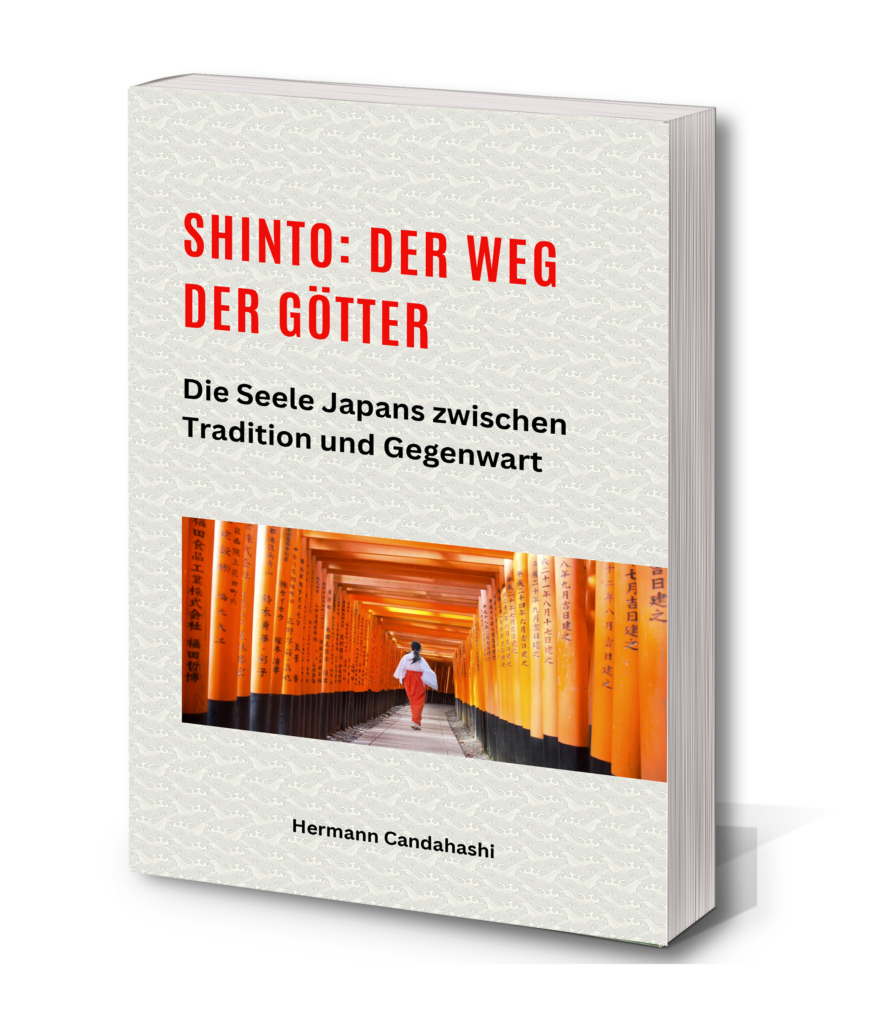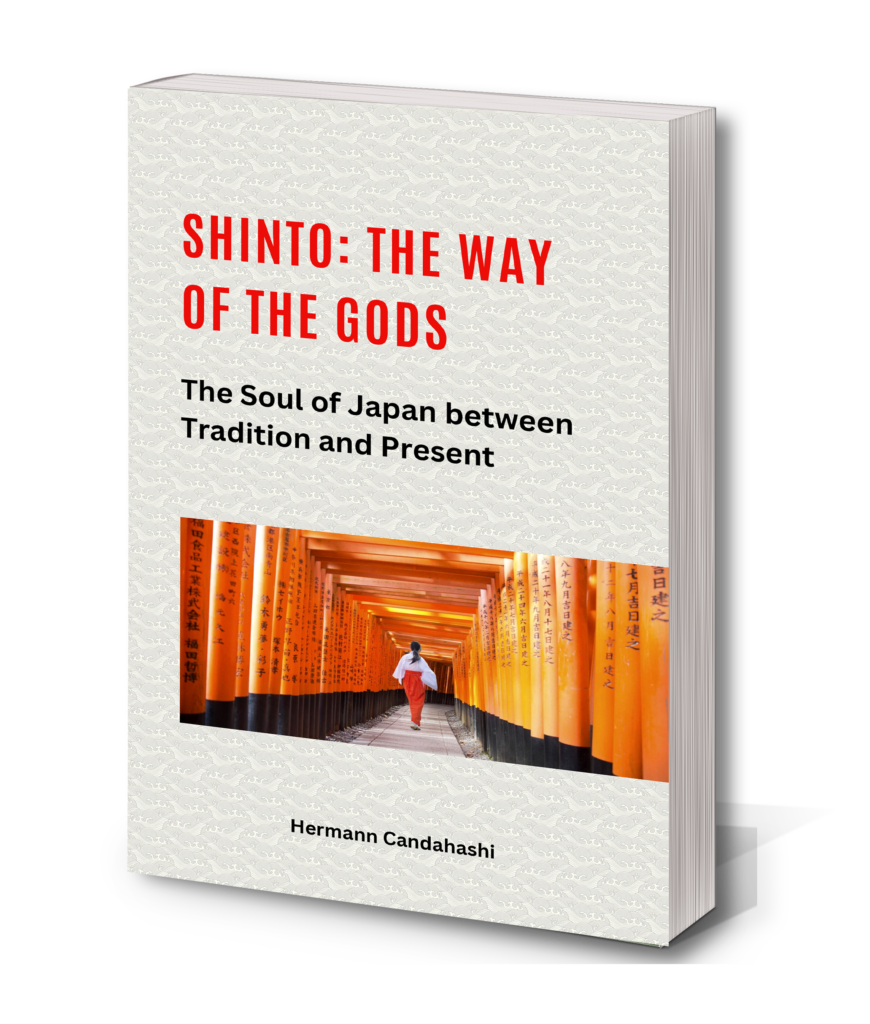

For centuries, Shintoism has shaped the cultural and spiritual life of Japan – a religion that celebrates the harmony between man, nature and the gods (Kami). This book introduces you to the mystical world of shrines, sacred rituals and mythical stories that form the heart of Japan.
What is Shintoism?
- Experience the shrines and festivals up close. Understand the meaning of Matsuri, Torii gates and ancestor worship.
- Myths that fascinate. Discover the stories of Amaterasu, Izanagi and Izanami.
- Tradition meets modernity. Find out how this ancient religion continues to shape the Japanese soul today.
This book is a window into the spiritual soul of Japan – for culture travelers, Japan lovers and anyone looking for inspiration.
Are you ready for a journey to the roots of Japanese spirituality?
Shinto: The Way of the Gods II will deepen your view of Japan and give you a new perspective on the connection between people, nature and the divine.
A must for anyone who wants to understand Japan and its unique culture!
Yours, Hermann Candahashi
An excerpt:
Shinto, literally translated as “Way of the Gods”, is one of the oldest and most deeply rooted religions in Japan, which has shaped the thinking, culture and traditions of Japanese society for thousands of years. Unlike many other religions around the world, which often prefer written texts and dogmatic structures, Shinto is a faith based on closeness to nature, on the worship of nature spirits (Kami) and on respectful coexistence with the environment. It is not a religion with fixed creeds or teachers, but rather a system of practices, symbols and rituals that accompany and support the Japanese in their daily lives.
The origins of Shinto lie in the myths and legends that tell of Japan’s beginnings. The Kojiki and Nihon Shoki, two of the oldest Japanese chronicles, provide insight into the mytholo-gical origins of the country and its gods, including central figures such as Izanagi and Izanami, who tradition says created the islands of Japan, and the sun goddess Amaterasu, who is worshipped as the ancestress of the imperial family. These mythical stories have influenced not only religious beliefs but also the political and social structure of Japan.
But Shinto has never been static. Over the centuries, it has experienced influences and changes, particularly from Bu-ddhism and Confucianism, which emerged in Japan at differ-rent times and blended with existing religious practices. This syncretic mixture remains an essential part of the religious life of the Japanese to this day, who often practice both Shinto rituals and Buddhist ceremonies, depending on the life events and traditions at hand.
Shinto is inextricably linked to the history of Japan and represents a unique connection between religion, culture and nature. This religion arose from natural phenomena and the idea that divine beings, the Kami, live in everything, be it a mighty mountain, an old tree or a clear river. These Kami are the souls or spirits that live in nature and influence people’s lives. They are revered, respected, and honored in ceremonies and rituals with prayers and offerings to receive their bles-sings or protection.
A fundamental principle of Shinto is the concept of purity (kiyome), which is reflected in the numerous purification rituals. Purity in Shinto refers to both the physical and spiritu-al levels and is crucial to gaining the favor of the kami. Purifi-cation rituals, such as washing the hands and rinsing the mouth when visiting a shrine, are central parts of the practice and symbolize the removal of impurities that could interfere with contact with the kami.
The Shinto festivals, called matsuri, are colorful and joyful celebrations that take place throughout Japan and affect the entire lives of people. They provide an opportunity to wor-ship the kami, express gratitude, and ask for their protection for the community. Every village and town has its own matsuri, often associated with specific shrines and their kami, honoring the seasons, harvests, or significant historical events.
Today, the question arises as to the role of Shinto in an increasingly modern and globalized world. Many Japanese continue to identify strongly with Shinto values and trade-tions, even if they do not consider themselves religious in the classical sense. Shinto beliefs have proven adaptable over the centuries and are present in modern Japanese society in different forms, whether through the symbol of the torii, the entrance gate to sacred places, or through respect for nature and the willingness to protect it.
In the following chapters, we will delve deeper into the different facets of Shinto: its origins and mythology, the nature spirits and the role of the kami, the rituals and festivals celebrated throughout the year, and the influence of this religion on Japanese society, politics and popular culture. The dialogue between Shinto and other religions and the chal-lenges Shinto faces in the 21st century will also be examined. The journey through this ancient religion offers a deep insight into Japan’s cultural and spiritual heritage and shows how Shinto finds its place and maintains its influence even in a modern world.
